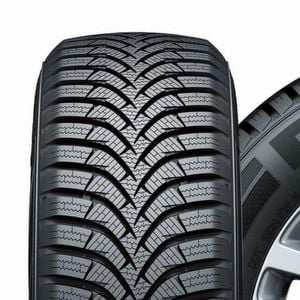Last Updated on 16.12.2024 by hrushetskyy

Many people wonder how fast can you drive on a donut spare tire. These tires are designed for slow driving and short distances, so read on to learn more.
Max Speed on a Spare Tire: What Every Driver Should Know

We all dread getting a puncture but we probably feel safer knowing that we have a donut spare tire in the trunk. However, before we get too complacent, it’s important to understand the limitations of our spare tires, especially how fast can you drive on a donut spare tire. So read on and find out the answer to this vital question.
Types of spare tires
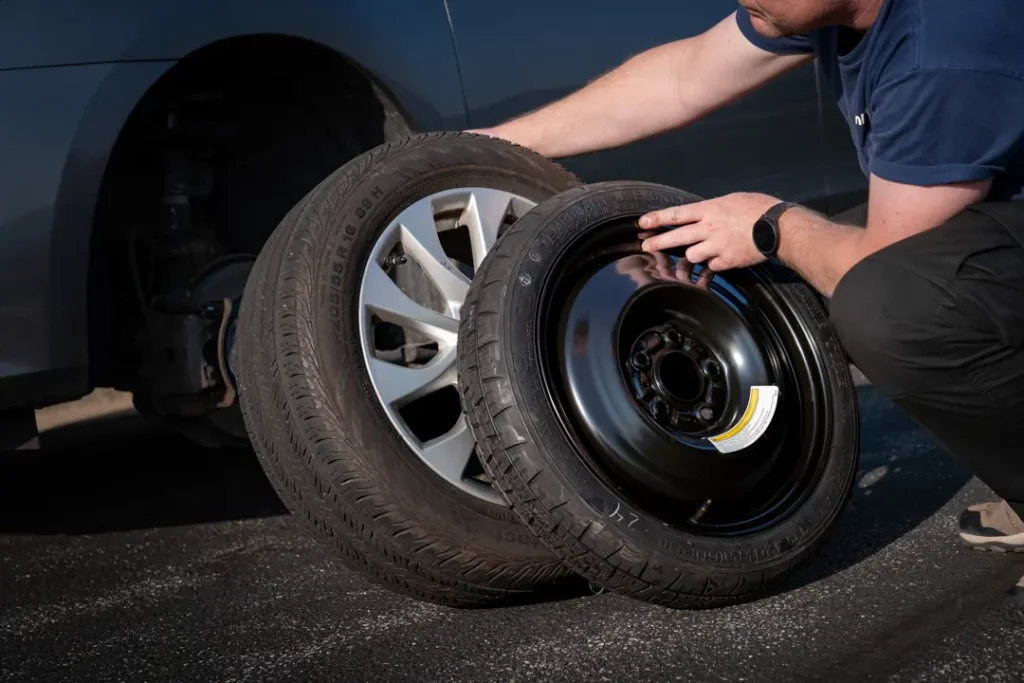
First, let’s take a quick look at the two main types of spare tires you might have:
- Donut spares also known as temporary spares or space-saver spares are smaller than regular tires and look almost like a motorcycle tire. They are designed to get you out of trouble when you have a flat, so you can get to the nearest mechanic and have your full-size tire repaired. Many cars have them, as they save a lot of space in the trunk. They have quite a few limitations.
- Full-size spare tires are basically the same as your regular tires and don’t have any speed limitations. Although you still want to get your original tire repaired and put back on, because you don’t want to be driving without a spare for long. Also, as the level of wear is likely be different on your spare tire than your other tires, it may affect handling slightly.
So, as you can see, this article is really about the first type of spare tire, the donut spare.
Speed limitations
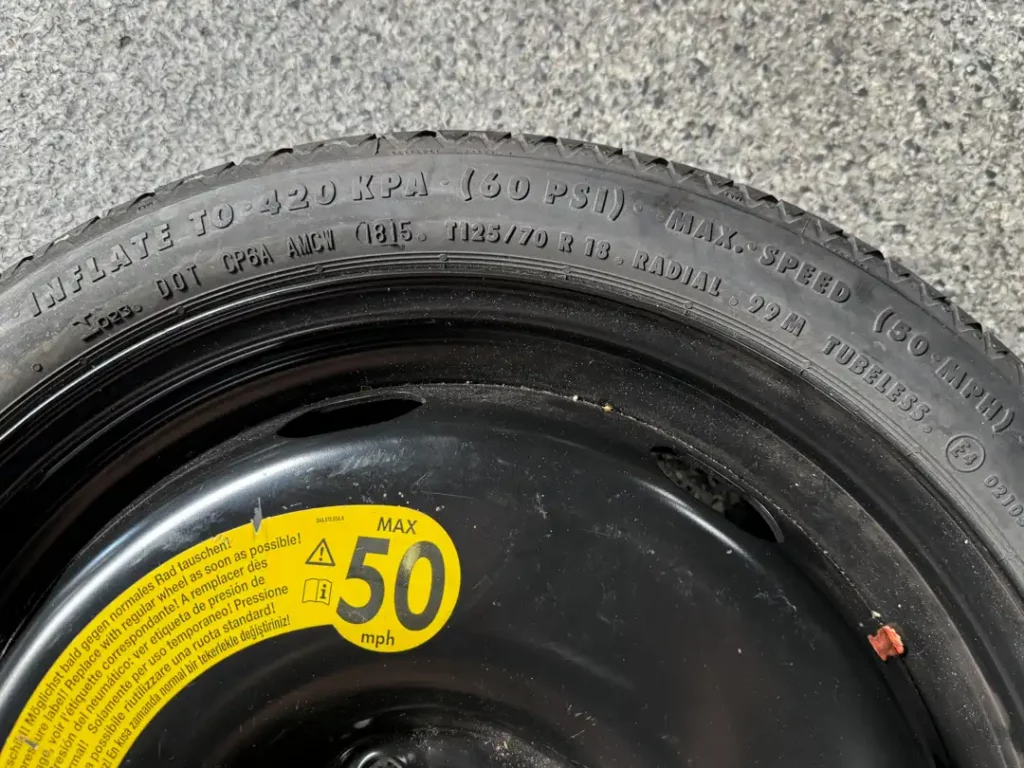
After getting a flat tire, your donut temporary spare will help you limp along to safety, but it’s not as solid and sturdy as a full-size spare. As a result of their smaller size, the manufacturer’s recommended speed limit for driving on a donut tire is usually 50 miles per hour. And this limit isn’t just a suggestion—it’s critical for your safety. You can check the exact speed limit for your spare tire by looking either on the tire, the rim or in your car handbook.
Unlike standard tires, which are built to handle high speeds and long distances, donut tires are small, narrow, and structurally designed to save space in your trunk. This design comes with significant trade-offs. The reduced contact area with the road means less grip, especially in emergency situations like sudden braking or sharp turns. Their smaller size also means they heat up a lot faster than a normal tire, so exceeding the speed limit on a donut tire increases the risk of a blowout, which could result in losing control of your vehicle.
To put it simply: driving faster than 50 mph on a donut is a bad idea The tire’s limited performance, combined with the high heat generated at higher speeds, can lead to a catastrophic failure. The donut is just there to get you to the tire shop, not to go any further!
Factors affecting safe speed

Even if you’re sticking to the 50 mph rule, other factors can influence how safe it is to drive on a temporary spare:
- Road conditions: Wet, icy, or uneven surfaces can make driving on a donut even riskier. The reduced traction of a donut tire makes it more susceptible to skidding or losing grip, especially on slick roads.
- Weather conditions: Rain, snow, or fog can further reduce your visibility and increase stopping distance. Your donut already has less traction, so needs even longer to stop. So, if the weather is bad, slow down, keep your distance from other vehicles, and avoid any sudden maneuvers.
- Traffic conditions: Driving in urban areas with lots of stop-and-go traffic can put extra strain on your donut tire, especially if you’re constantly braking and accelerating. On the flip side, highway driving at a constant speed of 50 mph limit can heat up the tire quickly, increasing the risk of a blowout. So be cautious and avoid any rapid maneuvers or extended distances at speed.
Donut spare tire safety tips
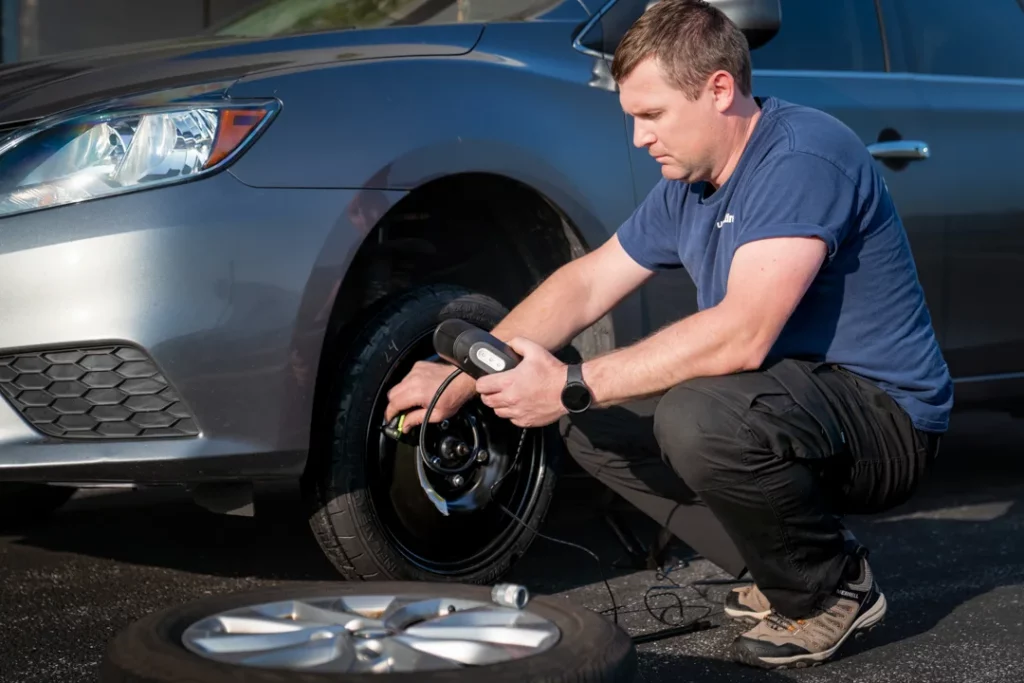
As you can see, you need to be extra careful when driving on your compact spare:
- Avoid sudden acceleration and hard braking: Smooth, gradual movements will help you maintain control and reduce the strain on your donut tire. Sudden changes in speed or direction can be dangerous on a smaller tire.
- Keep the spare tire properly inflated: Take a few seconds to check the air pressure in your donut tire before you install it, as it’s probably been sitting in your trunk for ages. An underinflated spare can
- compromise your safety, as it won’t provide even less support and grip.
- Plan your route: Try to avoid driving on highways or high-speed roads. Stick to surface streets where you can safely travel at lower speeds and make your way to the nearest tire service center.
- Limit your distance: Don’t use the donut tire for long distances as it’s only meant to be a temporary solution – most manufacturers say you should only drive 50 – 70 miles on your spare.
- All-wheel drive vehicles: If your car has all-wheel drive (AWD), it’s even more critical to change the donut quickly, as driving on a mismatched tire can damage your transmission and trigger the AWD failure lamp.
- Replace the donut ASAP: Don’t wait! After installing your donut your immediate priority should be to find the nearest tire repair shop or service center, so you can swap it out for a full-size tire as soon as possible. If you drive more than 50 – 70 miles on your donut spare, you’re risking trouble.
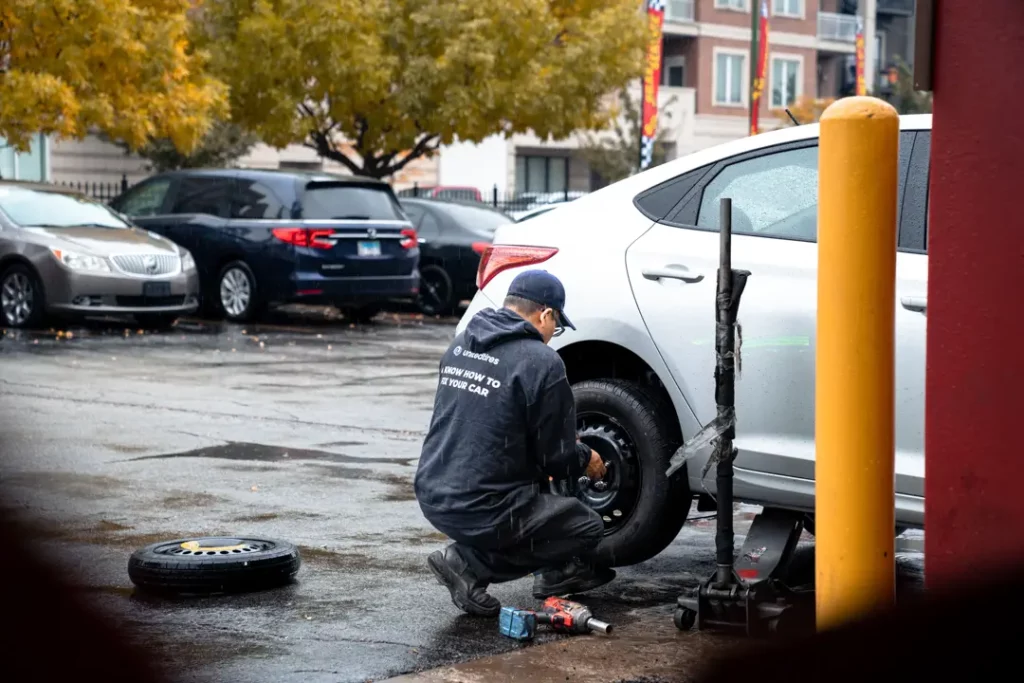
Driving on a temporary spare is all about driving cautiously and getting to the nearest tire service center as soon as possible. Replacing your donut with a full-size tire should be your first priority.
Frequently Asked Questions
Can I go 70 mph on a donut?
No, driving 70 mph on a donut tire isn’t safe. These temporary spares are designed for short distances and low speeds, typically no more than 50 mph. Going faster increases the risk of a blowout because the donut has a much smaller contact area than your regular tires and will heat up a lot more quickly. It also has less grip and maneuverability than your other tires. To stay safe, keep your speed down and head straight to the nearest tire shop to get a proper replacement as soon as possible.
Can you go 65 mph on a donut?
No, it’s a bad idea to drive 65 mph on a donut tire. These temporary spares are designed for low speeds, usually up to 50 mph, and for short distances, usually 50 – 70 miles only. Driving faster or further than that can be risky because the donut tire doesn’t have the same stability, traction, or durability as a regular tire. So drive slowly to your nearest mechanic or tire shop.
How fast can you really go on a spare tire?
The maximum speed for temporary spare tires is usually 50 mph. These compact spares are designed for short-term use and lower speeds because they don’t have the same traction or durability as regular tires. The exception to this is if you have a full-size spare, which is basically just the same as your other tires, in which case the speed limits are the same as with your regular tires.
What happens if you drive on a spare tire too long?
Driving on a spare tire for too long can lead to serious issues. Spare tires, especially the smaller donut types, are meant for temporary use only. If you use them for too long, they are likely to have a blowout. Additionally, using them for too long will put a strain on your vehicle’s suspension and transmission, especially in cars with all-wheel drive. This is why it’s essential to swap out your compact spare for a regular tire as soon as possible.
Share the Knowledge
